Whoop Strap 3.0 Review
Whoop Strap 3.0 Review
The Whoop Strap 3.0 is the first of Whoop’s fitness trackers to be made available to the general public
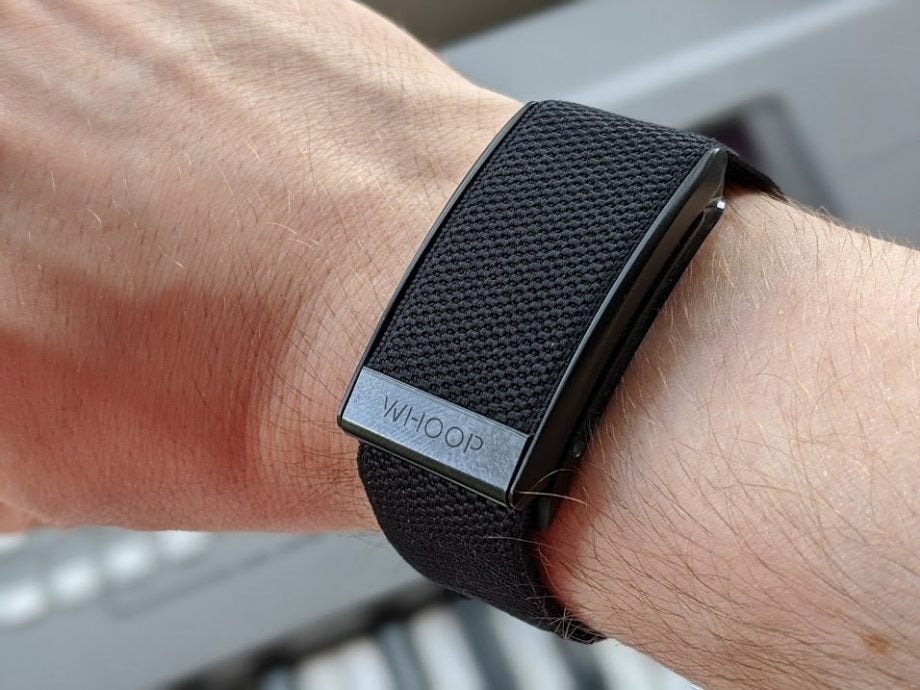
Verdict
For the health and fitness-focussed out there, the Whoop Strap 3.0 will no doubt tick a lot of the boxes for what you’d want out a fitness tracker. The ability to track HRV in addition to superb sleep tracking mean that of the few things the strap actually does, it does so incredibly well. If you’re willing to invest your time and money into the Whoop ecosystem, there’s enough here that you’re sure to reap the benefits in no time, but a high asking price in the long run accompanied by a lack of guidance for people dipping their toes into fitness tracking prevent it from being widely recommended.
Pros
- High-end HRV tracking on your wrist
- Incredibly detailed app
- Comfortable and easily customisable
Cons
- Costs a fortune over time
- Too reliant on a smartphone connection
- More guidance would be helpful
Key Specifications
- Heart rate variability tracking
- 24/7 recovery tracking
- Proprietary battery pack
- Subscription-based payment model
To most consumers, Whoop might sound like a niche little start up but to pro athletes and fitness fanatics, the company is renowned for producing fitness tracking tech that caters directly to their demographic.
While the first two Whoop Straps had their sights set specifically on the professional market, the Whoop Strap 3.0 is the first of Whoop’s fitness trackers to be made available to the general public, giving future Olympians an opportunity to use the same tech in their workout routine that athletes have benefitted from for some years now.
Because of its background – and the fact that the Whoop Strap boasts no screen whatsoever – it stands apart against almost every other fitness tracker on the market. The question then is whether or not the Whoop Strap’s unique features are enough to sway consumers, particularly with the device also boasting a subscription model payment system?
Design – inoffensive, unobtrusive and with plenty of options for customisation
The Whoop Strap, unlike any fitness tracker I’ve ever tested, doesn’t seem to be in any rush to reveal what it actually is.
For starters, there’s absolutely no screen to speak of, so analysing the data picked up by the strap is relegated entirely to the Whoop app. What we’re left with is the device itself, which is styled like a belt buckle, and the included ‘ProKnit’ band that allows the device to be strapped to your wrist.
Once you get your head around it, set-up is simple enough, although the included instructions didn’t quite do the trick for me and so I needed to go in search of a YouTube tutorial just so I could attach the device to my wrist. I’m almost positive that this issue is largely my fault however.
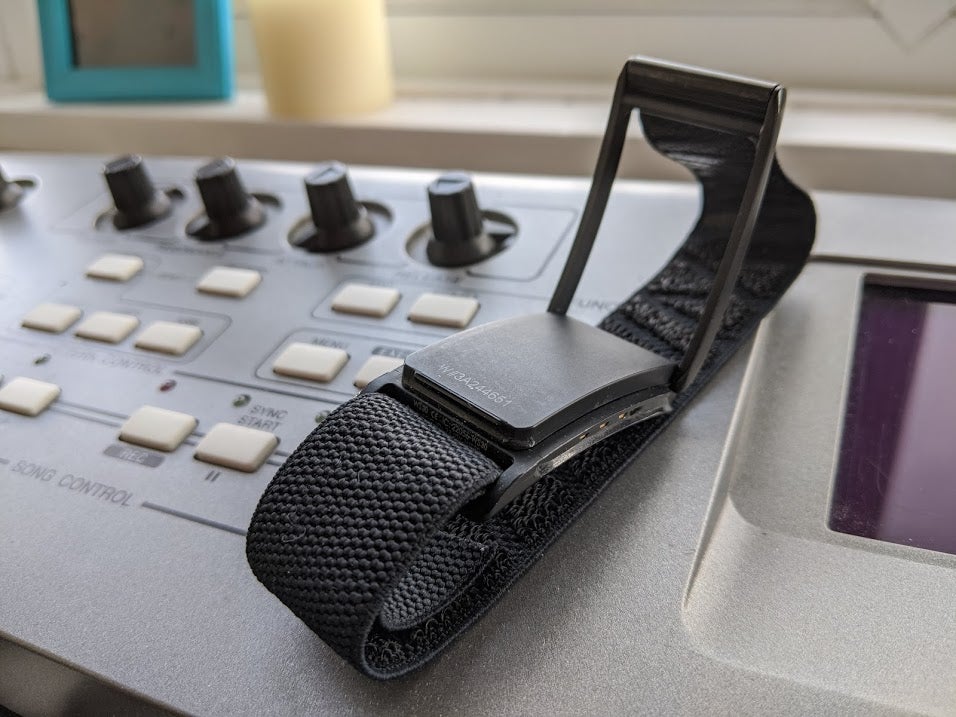
The ProKnit material is Whoop’s own blend of polyamide, polyester and elastane, amounting to a sturdy yet breathable strap that sits comfortably on your skin without irritation. The strap’s underside even features a soft textured grip to prevent the device from sliding up and down your wrist. While I can’t say that I ever unaware of the Whoop Strap’s presence, the combination of its lightweight design and soft materials easily allowed it to be one of the most comfortable fitness tracker’s I’ve ever worn.
There’s even the ability to customise your Whoop Strap’s band and clasp, with several options available through Whoop’s website. Most of these options are reasonably priced, starting at around €15, but some of the more premium vegan leather styles cost €99. For that kind of money, you could pick up a decent smartwatch if you knew where to look.
Accessories – More than one way to track your workout routine
Because the Whoop Strap was initially targeted at pro athletes, the manufacturer understood that, for some sports and activities, having a fitness tracker on your wrist just isn’t an option. As a result, there are alternatives available depending on your requirements.
The Bicep Band does exactly what it says on the tin and is pretty much a longer version of the traditional strap, but this time with the intention of being worn around the bicep instead of the wrist – perfect for anyone who simply cannot part with their festival wristbands.
Next up, you’ve got the impact sleeves, which can be worn around the arm like a piece of clothing, housing the Whoop Strap behind some padding so that it’s protected and out of the way. This particularly handy if you want to track your activity during a game of football or rugby.
Last but not least you’ve got the hydrobands, which from a distance, look indistinguishable from the initial Whoop Strap band. After all, the hydrobands are also meant to be worn on your wrist, but this time they’re made with nylon, allowing them to dry quickly after swimming.
While our review stayed firmly with the original provided strap, having those options available does allow the Whoop Strap to cater to different types of exercise in a meaningful way, and certainly not to a degree that’s previously been matched by other fitness trackers.
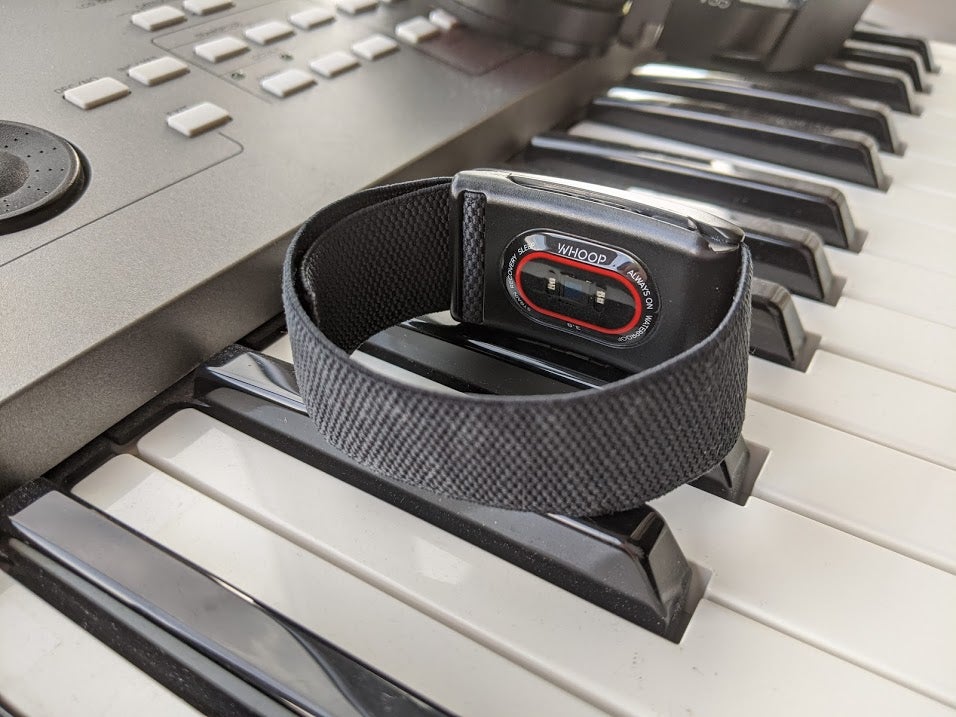
Features and app – a lot to love but it comes at a cost
For the Whoop Strap itself, arguably its biggest selling point is that it boasts one of the most accurate heart rate sensors available on a wrist-based fitness tracker. Traditionally, if you want to achieve the most accurate readings, a chest-strap, like the Myzone MZ-3 is the best way to go, but having anything constrictive during a high intensity workout has been known to put some people off, so the Whoop Strap is a fairly inconspicuous option by comparison.
The Whoop Strap’s accuracy also allows it to calculate heart-rate variability (HRV), which measures the amount of time between heartbeats as a means of better understanding your body’s current state of health. For instance, a lower HRV can be a good indication of a solid workout and your body can be expected to bounce back, but an extended HRV in this area can also be an indication for potential underlying health issues. For anyone looking to put their body through incredibly strenuous exercise, this information can be a life saver.
That same technology also grants the Whoop Strap access to superb sleep tracking results. Not only can you see key details like the amount of time you spent in various sleep cycles and your respiratory rate throughout the night, but the Whoop app will also tell you the efficiency of that particular night’s sleep and how it fits in with your body’s current state of recovery.
I only wish that this data could be translated into layman’s terms a bit better. For example, with the humble (and superbly cheap) Honor Band 5, the accompanying app would actually suggest meaningful ways in which you could improve your sleep pattern. It’s a small point of contention, but it would be great to see that here as a means of better understanding how to apply Whoop’s detailed analysis into real-world results.
As you may have guessed by now, the majority of Whoop’s bells and whistles actually lie in the app, which is understandable for a device with no screen and no means of indicating information by itself to the user, but there’s a hefty price to pay for this wearable-cum-app combo.
The previous Whoop Strap 2.0 could be picked up outright for an eye-watering $500, and so this time around Whoop has seen fit to make things a bit easier with a subscription model costing €25 a month (with overall cheaper annual payments available as well), but does this actually solve anything?
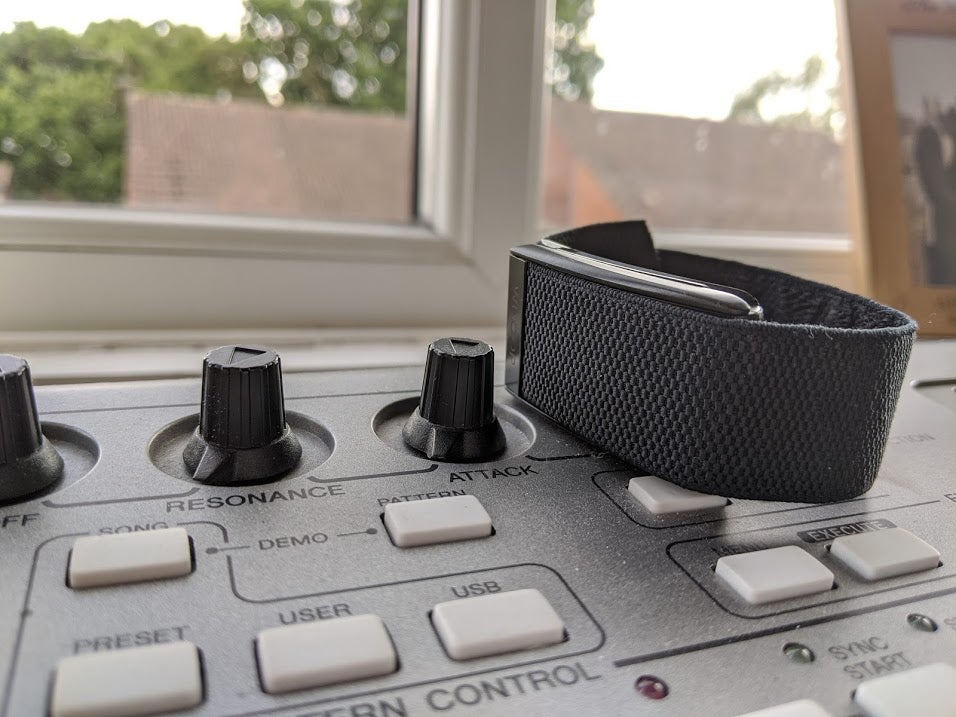
One the one hand, it’s great that the barrier to entry for the Whoop Strap 3.0 is incredibly low, but if you sign up for that €25 a month option and plan on wearing the device for more than two years, you’re looking at a staggering €600 and then some. Even the crème-de-la-crème Apple Watch 5 can be had for less than that. While I do recognise that what you’re largely paying for is access to the Whoop app and its metrics, I would have expected for the app itself to offer more in the way of advice and workout plans, but we’ll get to that a bit later.
Of course, if you’re a professional athlete or someone who plans on being fully invested in the Whoop ecosystem, then there’s a case to be made for picking one up, but for the average folk who simply want to get a bit healthier and keep track of their progress, there are far more affordable options out there that can give you exactly what you need for less.
Fitness tracking – almost top dog but not there yet
Setting it apart from other fitness tracking apps, Whoop’s data is broken down into three easily digestible sections: strain, recovery and sleep.
Your daily strain is directly correlated to your HRV, daily workouts and any stress you might incur. Recovery shows whether or not your body is fully rested and if your HRV indicates that you’re ready to take on a hefty load of strain. Sleep is exactly what you’d expect, giving you a bunch of information about your circadian rhythm that feeds directly into your recovery level.
All three of these sections are simplified into easy to understand metrics: recovery and sleep operate on a percentage scale while strain utilises a decimal system that’s unique to your own fitness levels. Simply swipe up on any of these categories and you’ll be treated to more in-depth data should you need it.
There’s even a Strain Coach feature to see your workout efforts in real time, not too dissimilar to the coloured gauges on the Myzone app. If you’re the type of person who loves to flaunt their gains, Whoop’s got you covered there too with the app’s latest feature: Whoop Live.
Whoop Live lets you record your workout with several overlays displaying key bits of information such as your heart rate and the number of calories burned. It’s a neat little gimmick that certainly gives a bit of added flair to the Whoop app, but I’m sorry to say that my ego isn’t big enough just yet to invade people’s Instagram feeds with my sweaty face.
All of this equates to one of the smoothest app interfaces I’ve ever had the pleasure of using. Aside from a few bits of information that are annoyingly hidden under extra layers of navigation, and the occasional disconnect from Whoop’s main servers, everything largely operates without issue.
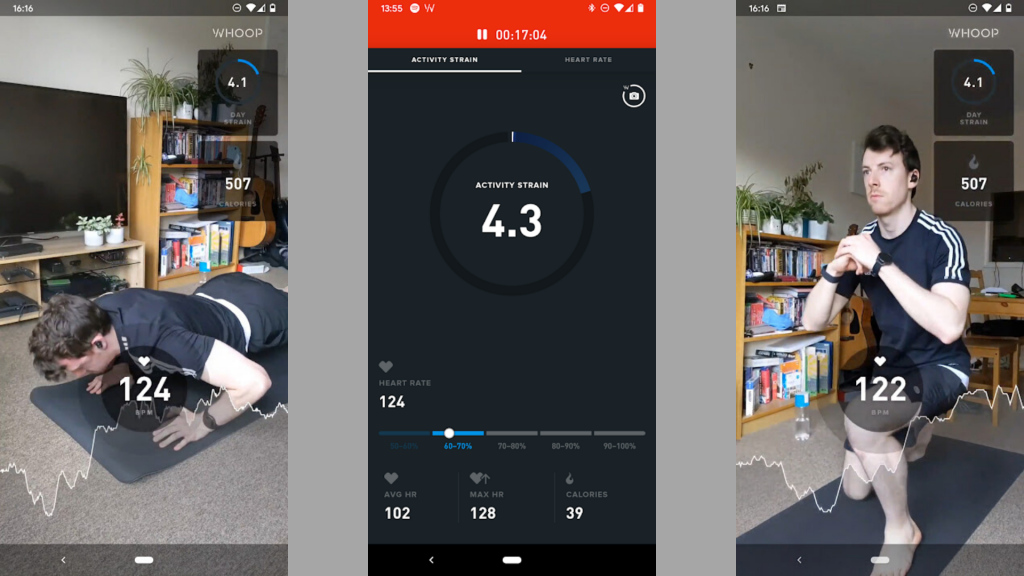
The downside to all of this is that, in order to get the best experience possible, the Whoop Strap and your phone need be connected at all times, with an implied expectation that you’ll be bringing your smartphone along for the ride with each workout. While this won’t be an issue for some – I have certainly seen plenty of people at the gym and on a park run who gladly show-off their smartphone in an arm strap – the last thing I ever want near me during a workout is my smartphone.
Having that distraction can often pull my focus elsewhere, and the appeal of a wearable is to have the key fitness features that you need but in a form factor that’s unobtrusive. If you’re like me in this regard, you’ll find that it’s almost essential to have another wearable with you alongside your Whoop Strap, particularly for keeping track of the timings of your workouts, as you’ll want to key that information into the Whoop app later to get the best accurate possible.
Beyond that, one of the most glaring omissions is any ability to construct a workout plan within the app. Given just how valuable Whoop’s data can be, it seems strange that when it comes to practical application, it’s largely a guessing game on the part of the user to try and figure out a workout routine that can best fit their current recovery level.
Having some sort of mix and match workout planner, or at least some advice on the types of exercises to avoid during recovery days would be of immense help, and a feature that I’d love to see Whoop adopt down the line.
Battery life – just the ticket to handle 24/7 use
Because the Whoop Strap is designed to be worn at all times, the company has come up with a fairly smart workaround for charging, namely a battery pack that can be placed upon the strap when needed. This allows you to keep wearing the strap even while it’s charging.
It’s a sold idea in theory, but there’s no denying that the battery pack itself is a hefty piece of kit, and can make it feel as though you’re wearing a second watch. Luckily, the battery pack remains sturdy while it’s in place, and charging rarely took more than an hour to complete.
You don’t have to get too familiar with said battery pack either as the Whoop Strap can run for roughly five days on a single charge, impressive stuff given that it’s constantly in use.
Price – a deal on entry that quickly adds up
For its third fitness strap, Whoop has changed the pricing structure to make it easier for people who aren’t flushed with cash to get on board. From €25 a month, you’ll get a brand new Whoop Strap 3.0 sent in the post and access to the Whoop App. This monthly option comes with absolutely no upfront cost, but there are one-off payments available for 12/18 month subscriptions costing €252 and €288 respectively, saving you money in the long run.
While this sounds all well and good from the outset, it’s a cost that quickly ramps up if you plan on wearing the Whoop Strap for two years or more. For instance, two years on the €25 a month membership will set you back €600, far more than what you’d expect to pay for any wearable these days. Only the most dedicated fitness fanatics need apply here.
Should I buy the Whoop Strap?
For the health and fitness-focussed out there, the Whoop Strap 3.0 will no doubt tick a lot of the boxes for what you’d want out a fitness tracker. The ability to track HRV in addition to superb sleep tracking mean that of the few things the strap actually does, it does so incredibly well. If you’re willing to invest your time and money into the Whoop ecosystem, there’s enough here that you’re sure to reap the benefits in no time.
On the other hand, the Whoop Strap would undoubtedly be the wrong fitness tracker of choice for anyone with a casual approach to fitness. The lack of any proposed workout routines within the app mean that there are far more fitting options likes the Honor Band 5 and the Fitbit Charge 4 that also cost a lot less.
There’s a great deal of potential with the Whoop ecosystem, the technology in play here is hard to fault, but a high asking price over time, in conjunction with its reliance on a nearby smartphone mean that there’s still room for improvement until it can truly be recommended on a wider scale.


